List of Authors
>>About this blog
Recent blog post
|
[Nanako Tsukishima]
May 1, 2017 12:00
 Recently, the phrase "Spring Earth (Ox Day)" is sometimes seen in the city. Recently, the phrase "Spring Earth (Ox Day)" is sometimes seen in the city.
Isn't "Doyo" a midsummer who eats eels on the day of the ox? I wondered, and looked it up.
It is derived from this "Doyo" and China's "Yin-Yang Five Lines Thought", and is said to be four times a year for each season. The 18 days before spring, summer, fall, and winter are called "earth use", and there is a meaning of the adjustment period to move on to the next season, spending time quietly before starting new things in a busy period.
By the way, in the case of this year, May 5 is a summer, so April 17 to May 4 will be used for spring soil.
Certainly, this period is the timing of "May's illness", and there is a difference in temperature between morning and evening, and it is a time to complain of mental and physical disorders, so old teachings are also used in modern times.
So, at such times, I wonder  if you eat if you eat  eels and get better, but in fact, according to the five-way philosophy, the food that sticks on the day of the ox is good for summer soil, and the spring soil is `` White that sticks on the day of the dog '' Things "are good. eels and get better, but in fact, according to the five-way philosophy, the food that sticks on the day of the ox is good for summer soil, and the spring soil is `` White that sticks on the day of the dog '' Things "are good.
Looking at the calendar, the dog day during the spring soil period is only April 29.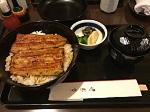
What is the "white thing with i"? Squid?
Is it better to go to Tsukiji and have squid sushi?
But after all, it's an eel. In the end, I went to a long-established eel shop at the main store in Ginza 8-chome.
By the way, there are two Ox Days on April 20 and May 2 in the spring of this year.
Everybody is full of people during the major holidays, but it is also recommended to enjoy spring soil, such as eating and comparing delicious eels from long-established stores in the city or eating white food at Tsukiji.
[Nanako Tsukishima]
March 27, 2017 16:00
 On March 27, 1997, my Tsukishima story began. On March 27, 1997, my Tsukishima story began.
This is the 20th anniversary of my residence in Tsukishima, and I will introduce the state of the Tsukishima area at that time based on my memory. I was filled with nostalgia while writing.
 Tsukishima Higashinaka-dori Tsukishima Higashinaka-dori
Then, from Tsukishima Daiichi Park. Recently, it has been crowded with cheerful little children, but at that time it was a park like a forest with little children and a tree-grown forest with too active structure that descends on a slide from a small mountain in the center. There was a horse mackerel sun-dried shop nearby, and behind it was a factory for Tsukiji Irifune. As the New Year approached, steam was rising early in the morning.
Irifune was a good friend of my neighborhood.
 Tsukishima Nishinaka-dori Tsukishima Nishinaka-dori
In April 1997, 44 stores joined and the Tsukishima Monja Promotion Association was launched, and it was already called Monja Street, but there were still quite a few retail stores such as handicraft shops and toy shops . It was also a daily routine to greet the police officer of the Metropolitan Police Department's oldest active police box. Now it has become the Nishinakadori Community Safety Center and is a base for community safety activities. By the way, Kiyosumi-dori at that time is under construction of Toei Line 12, and the opening of Tsukishima Station on the Oedo Line was on December 12, 2000.
 Harumi Harumi
Although it closed in 1998, the large seafood restaurant "Pia Harumi" located behind the Tokyo Hotel Urashima was a symbol of the bubble era, and the large aquarium facing the sea was impressive. After that, Harumi transformed into a skyscraper town. Every May, a number of carp streamers are raised at the construction site of Triton Square, and the appearance of swimming in the wind is burned to the eyes.
 (Extraditional) Akashicho May 7, 1998 (Extraditional) Akashicho May 7, 1998
Mr. hide. His farewell ceremony, which was a member of X JAPAN, was held at Tsukiji Honganji on that day. Fans who gathered for goodbye made a long line from Tsukiji along the Sumida River and St. Luke Garden. Last year's red and white, I saw X JAPAN, which exterminated Godzilla with a song, reminded me of what moved many young people at that time.
By the way, what will happen to Tsukishima in the next 20 years? Inuhiko Yomota, the author of Tsukishima Monogatari, an indispensable book for talking about Tsukishima, was worried about the transformation of Tsukishima, which is expected to occur in the next 10 years in the early 1990s, but less than 30 years later, the city of Tsukishima seems to be swallowing the swells of the times. A new large-scale redevelopment has begun on Nishinaka-dori, and in the era when Tokyo itself is about to start moving toward 2020, even if Tsukishima changes its shape in the flow, it will survive forever and attract people I want you to be.
Reference:
Aela 1999.12.20, Nikkei Shimbun, Inuhiko Yomota "Tsukishima Monogatari" Shueisha
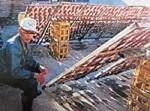 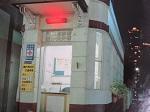 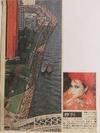
[Nanako Tsukishima]
February 21, 2017 14:00
 Saturday, February 18 was the ninth Chuo-ku sightseeing test. I'm looking forward to the results. Saturday, February 18 was the ninth Chuo-ku sightseeing test. I'm looking forward to the results.
By the way, this time, from the privilege of those who passed the sightseeing certification "Chuo-ku original Senshafuroshiki".
As you know, this furoshiki is studded with "Sensha bills depicting all the town names of 37 towns in Chuo-ku and patterns related to the place". There are three colors: red, black, and Edo-purple.
Furoshiki is now very popular as an important item of "Cool JAPAN", which is multifunctional with a single piece of cloth, and there are many ways to use it. So I'm very happy to receive it.
After I got this Senshafuroshiki, I changed from the one I used to "wrapping" to a "watching" one.
There are also bills that are obvious at a glance like Tsukishima's Monjayaki Shop Japanese shop curtain, but Nihonbashikobunacho's bills that depict "dansen" associated with a fan wholesaler are very tasteful. The Y-shirts and ties from Nihonbashi Yokoyama-cho are also interesting.
Such Senshafuroshiki has become the "wall hanging" of my home, and colors the Japanese-style room side by side with the woodcut amount of Hasui Kawase.
I have become a fan of Sensha bills, but the other day, I found a new Sensha bills Furoshiki goods at the Chuo-ku Tourist Information Center in Kyobashi Edgran, and I was more and more excited.
Book covers, paperback covers, smartphone covers, etc. are all three colors, red, black, and Edo purple, just like furoshiki.
This time, I purchased the "Edo Town Greeting Card" of "Kachidoki" in the photo.
Why don't you look for your favorite Senshafuroshiki goods and draw the name of the town in Chuo-ku?
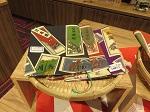 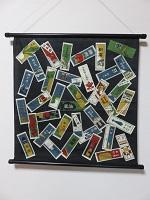 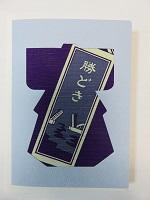
[Nanako Tsukishima]
January 16, 2017 16:00
 At the beginning of the year, from the introduction of my favorite "Kyodai Shoran". At the beginning of the year, from the introduction of my favorite "Kyodai Shoran".
The reproduction picture scroll "Kidai Shoran" in the underground concourse of Tokyo Metro "Mitsukoshi-mae" station.
After watching a movie at COREDO Muromachi, when I shop at the Mitsukoshi Main Store, I always stop by "Kyodai Shoran".
1671 people and animals (20 dogs, 13 horses, 4 cows, 1 monkeys, 2 hawks, etc.) are drawn in a picture scroll about 17m in length (1.4 times the original picture), so no matter where you look, I was drawn into the Nihonbashi area 210 years ago and forgot the time and looked into it.
The details of "Kyodai Shoran" are left to "Chuo-ku Monoshiri Encyclopedia", etc., and this time, I got information that this "Kyodai Shoran" will return home for the first time in 11 years, so I immediately explored it. Was.
Unfortunately, the place to return is the Edo Tokyo Museum in Koto-ku next door.
In order to obtain specific information, I would like to call directly and ask.
・special exhibition held from February 18 (Sat) to April 9 (Sun) 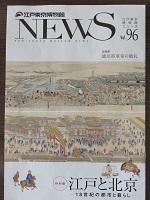
"Edo and Beijing - City and Living in the 18th Century -"
In a part of urban life, I depicted the city of Beijing.
In order to display them side by side with "Manju Morinori".
I will return home from Germany to the museum for the first time in 11 years.
・However, when (how many days) will be exhibited during the period?
It is undecided today.
That's right.
"Kyodai Shoran" means "the scenery of Oedo, which is the winner of the Kiyo (Kagaya). I'm really looking forward to the day when I can meet the "winning landscape" returning home.
[Nanako Tsukishima]
December 26, 2016 09:00
 Where are you going to new year worshipping? Where are you going to new year worshipping?
I also like the atmosphere of Namiki Shrine when I go to Ginza for the first time, but I also love Sumiyoshi-jinja Shirine, which is "guardian god".
This time it is a little early, but I would like to introduce the new year's recommendation of Sumiyoshi-jinja Shirine.
It is the "Minomori" of Ryu Shrine in the precincts.
It is a talisman that guides virtue, success and good luck for one year, but it is a valuable talisman that is distributed only one day on Hatsumi Day, the first fair of Ryu Shrine every year.
The first snake of 2017 will be January 6 (Fri).
Ryu Shrine is a small shrine on the left toward the main shrine of Sumiyoshi-jinja Shirine, so why not visit and get a valuable talisman?
By the way, another recommendation at Sumiyoshi-jinja Shirine is "Dharma Mikuji". A while ago, it was featured in the Tokyo Metro information program.
A set of cute mini daruma and Omikuji in eight different colors for wish, the green daruma in the photo is "Healing various diseases and physical health."
Then, from now on, I would like to worship Daruma's left eye.
I would like to thank Nanako Tsukishima's monthly blog for the new year.
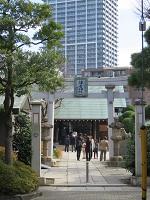 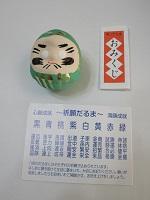 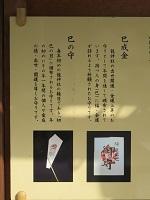
[Nanako Tsukishima]
Nov. 14, 2016 14:00
 In the fall of art, the Sumida-ku "Sumida Hokusai Museum" scheduled to open on November 22 has become a hot topic. Therefore, I decided to take up Hiroshige Utagawa (1797-1858), a ukiyo-e artist who rivals Hokusai and has a connection to Chuo-ku. In the fall of art, the Sumida-ku "Sumida Hokusai Museum" scheduled to open on November 22 has become a hot topic. Therefore, I decided to take up Hiroshige Utagawa (1797-1858), a ukiyo-e artist who rivals Hokusai and has a connection to Chuo-ku.
As described in the Chuo-ku Monoshiri Encyclopedia, Hiroshige Utagawa lived in Ogamachi (now Kyobashi) for about 10 years from the age of 53 to his death in 1849.
By the way, when you hear Hiroshige Utagawa, I think that many people think of "Tokaido Goju Sanji" (for those who are more than Arafo, who are familiar  with Ochazuke seaweed that has been revived for the first time in 20 years), It seems that the most worked on is Edo's famous paintings. with Ochazuke seaweed that has been revived for the first time in 20 years), It seems that the most worked on is Edo's famous paintings.
This time, we decided to see "Hundred Famous Views of Edo", which is said to be the culmination.
Among the more than 100 works, there are many set in Chuo-ku, but among them, "Eitai Bridge Tsukuda Shima" (left) and "Tsukuda Shima Sumiyoshi Festival" (right) will be performed.
The scenery of Tsukuda seen from Eitai Bridge has changed completely after about 160 years, but I feel that the enthusiasm of Sumiyoshi's festival once every three years has been handed down to the present day.
There are many books about Hiroshige Utagawa, so it is recommended to go around the stage of the work on a sunny autumn day.
Here are two trivias.
・Edo's famous paintings are very popular as souvenirs to Kunimoto for people who came to Edo from various places, and the price was 32 sentences for two cups of soba (so-called Nihachi soba).
・Hiroshige Utagawa died in the pandemic of cholera in Ansei, which killed more than 100,000 people in Edo alone.
(Both of them were the questions of this year's Edo Cultural History Certification.)
Finally, while walking around Kyobashi the other day, a long-established pharmacy displayed a photo of a Kyobashi trilogy in Hiroshige Utagawa's `` Hundred Views of Edo '', `` Kyobashi, a city that Hiroshige Utagawa loved with soul. It is a masterpiece of a lifetime. " It's really fun to walk around the city.
(Reference Book)
A small museum Hiroshige Utagawa [Hundred Views of Edo] (Seigensha)
Akiba Pharmacy
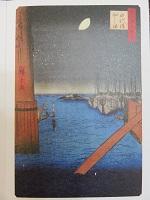 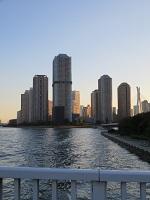 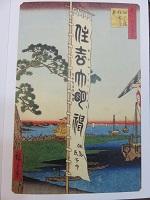
|
Links
|
![]() Recently, the phrase "Spring Earth (Ox Day)" is sometimes seen in the city.
Recently, the phrase "Spring Earth (Ox Day)" is sometimes seen in the city.![]() if you eat
if you eat ![]() eels and get better, but in fact, according to the five-way philosophy, the food that sticks on the day of the ox is good for summer soil, and the spring soil is `` White that sticks on the day of the dog '' Things "are good.
eels and get better, but in fact, according to the five-way philosophy, the food that sticks on the day of the ox is good for summer soil, and the spring soil is `` White that sticks on the day of the dog '' Things "are good.


